One of the most popular mushrooms in our country is considered to be throats and mushrooms. These species are very similar and inexperienced mushroom picker can be extremely difficult to distinguish between them. Both throats and saffron mushrooms belong to the genus Mlechniki, which is characterized by the absence of fibers in the pulp. If you break such a mushroom, you can see the juice or white liquid.
In most representatives of this genus, the juice is considered poisonous, but both thrush and saffron milk don’t pose a danger to humans. Residents of Europe consider these species to be inedible, and in Russia they are collected and eaten in pickled or salted form. These two species are very similar, but in fact they have many differences. Visually, the difference between saffron milk cap and throat can be seen in the photo. In addition, each species has other differences.
Content
Description and features of mushrooms
To understand the difference between thrills and mushrooms, it is worth familiarizing themselves with their photo and detailed description.
Ginger
Among the milkmen, it is considered to be the most high-quality and delicious mushrooms. They include several types:
- present;
- spruce;
- boron;
- milky red.
Milky red and boron are lamellar. The habitat of these two species is mixed forest. Spruce milk can be found in the burs, where spruce grow.
The saffron has a bright yellow or yellow hat with a red tint. In appearance, it is quite dense and strong. The funnel-shaped cap has a round shape, and its diameter varies between 5-18 cm. Concentric areas of a dark color can be seen on the cap. The surface of the cap is slippery, and after rain it becomes sticky to the touch. The brittle leg is the same color as the hat. The shape of the leg is cylindrical, and after the growth of the camelina, the leg is hollow.
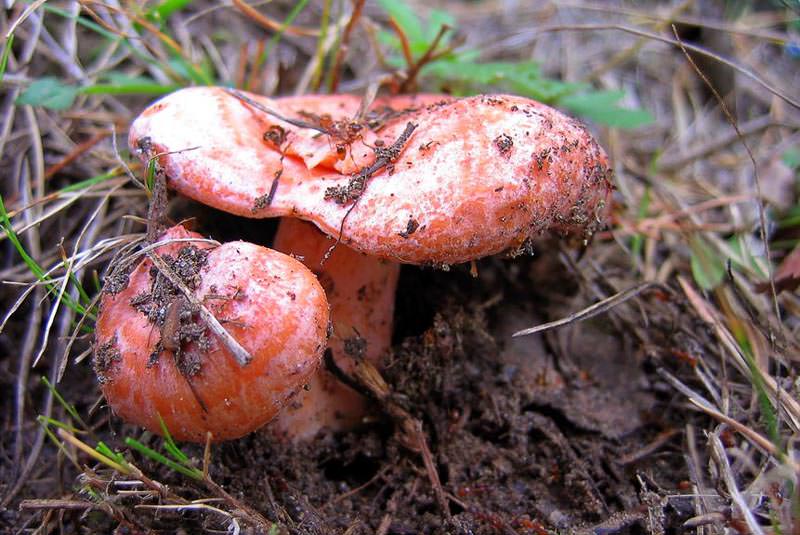
The pulp also has an orange tint, which on the cut first turns red and then turns green. The plates are often located, and have a lighter color. When pressed, the plates turn green noticeably.
This camelina has distinctive features:
- shiny, slightly damp hat;
- the color of the upper layer may be yellow, red-brown, reddish or orange;
- the surface of the fungus has concentric circles, and sometimes you can notice a light coating;
- young fruits have a convex hat, which eventually becomes flat or concave.
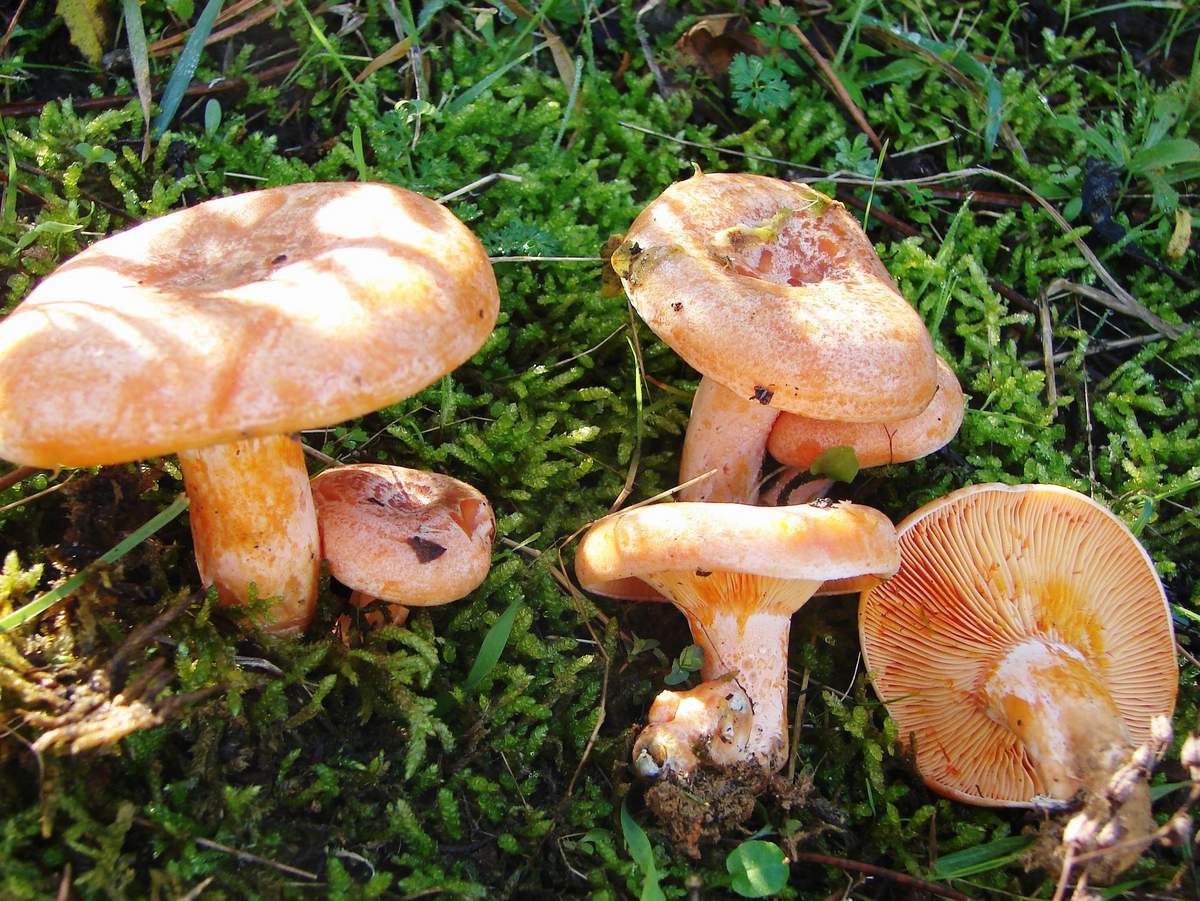
Raw flesh has a pleasant taste and a slightly fruity aroma.
Wake
Very often, lovers of quiet hunting in spruce and birch forests find mushrooms similar to saffron mushrooms - these are pink waves. They got their name from the word “wow”, because a barely noticeable fluff grows on their hats. You can meet them in forests with sandy and siliceous soil, most often under birch trees.
The mushroom cap grows 1.5-10 cm wide. In young specimens, it is convex, and with age it becomes concave with the edges wrapped inward. The hat is covered with thick hairs, which makes the wave beautiful.
The color of the hat is light pink, sometimes with a yellow or gray tint. Wide circular stripes are clearly visible on it. The flesh has a pale pink color, and to the touch it is very dense and dry. Thickly arranged plates of the same color as the hat, but somewhat lighter. Juice is colored yellow-white.
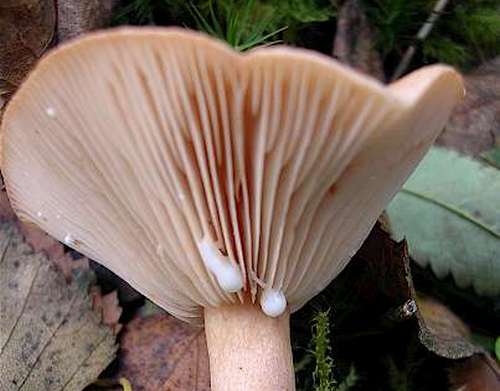
The pale leg reaches 5 cm in height. It is smooth, dense, sometimes with small dark dents. It happens that with age, the leg becomes hollow.
The taste of cooked mushrooms is not for everyone.Raw waves are very caustic, but when cooked, this aftertaste disappears, although a slight sharpness remains. The bitterness of the mushroom disappears after cooking.
Similar characteristics of the two species
Both species are close relatives, because they belong to the same genus. The juice of these mushrooms in most countries is considered poisonous, but we collect mushrooms with pleasure, and use them in pickled and salted form.
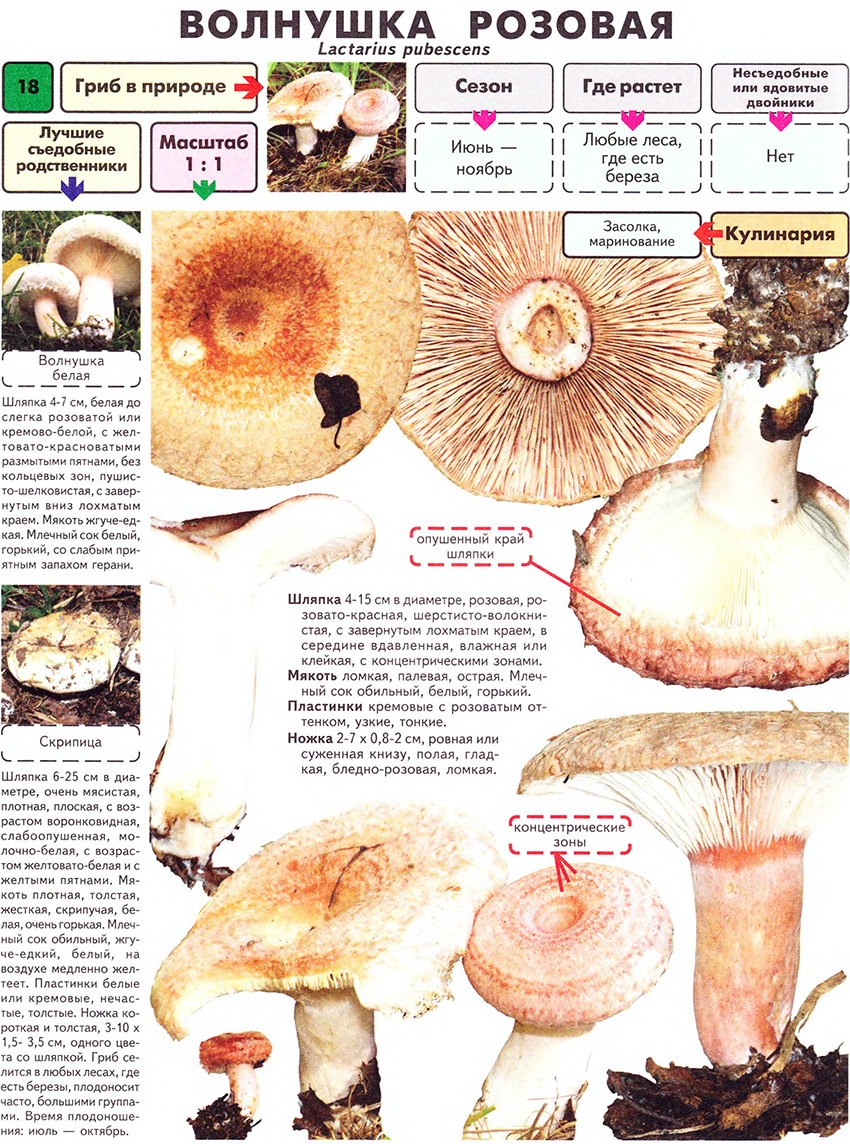
The first similarity between these two species is that they both live in birch groves and spruce forests. At the same time, they can grow next to each other, which confuses beginner mushroom pickers. Outwardly, the mushrooms are very similar, because the tremushka can have both a pink and an orange tinted hat. Both fungi have concentric circles on it.
Under the head of these mushrooms are densely arranged plates that have a lighter color than the surface of the mushroom. Most often, mushroom pickers are lost at the sight of young mushrooms, because both species in this period have bulging hats.
Characteristic differences
These two species have much more differences than might seem at first glance. For the correct definition of the fungus, you should familiarize yourself with the following features:
- Smooth hats of saffron mushrooms always have a red color, and waves, with their shaggy hats, have a pink hue.
- The juice of the waves is white, and in saffron milk it is carrot-colored.
- On the upper layer of both species there are circles, but the waves are more distinct.
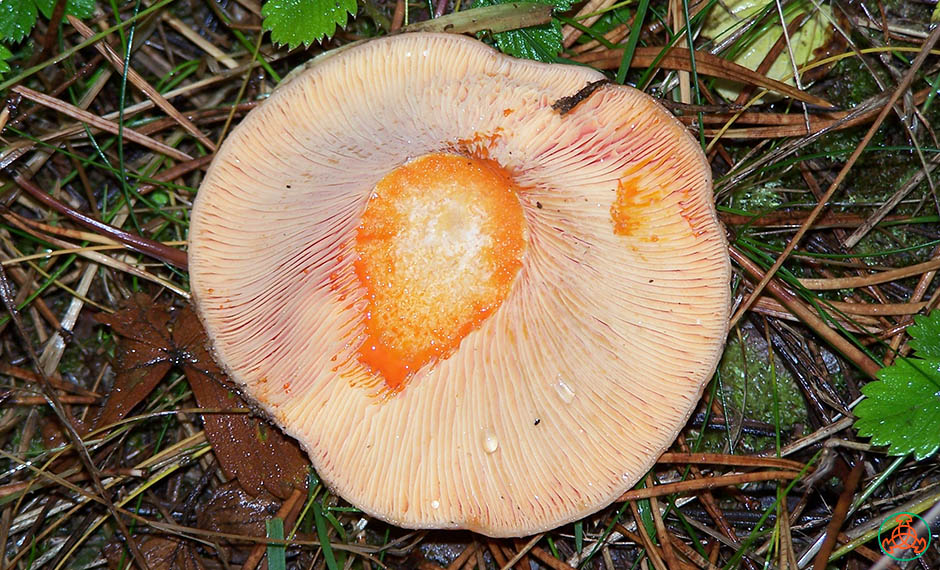
Milky juice in pine mushrooms - If we compare the mushrooms of the same age, then the mushrooms are larger.
- The place of the cut of the trap does not change color, and in the camelina, it acquires a greenish-blue color.
- Volnushki are more common in forests, because they are not so whimsical to the living conditions. Ginger can grow only in environmentally friendly places and always away from the roadway and dust.
- The cooked saffron mushroom darkens, and the wave becomes light gray.
Ginger is characterized by a funnel-shaped hat with even or slightly curved edges. The flapper hats have a more spherical shape, and the edges are much rounded inward.
Ginger are considered delicacies, because they have a pretty good taste. Before cooking, they should only be cleaned, there is no need for prolonged soaking.
Before cooking, the traps should be soaked in water for a couple of days so that the bitterness is gone. During soaking, water should be changed periodically. Use for pickles can only be well-soaked milkers, because there is a risk of food poisoning. After salting, you should wait about two months, and only after that you can eat.
Answers to Common Questions
Experienced mushroom pickers should know the smallest details about each mushroom - color, smell, taste, habitat of different species. But many have questions. Consider the most common of them:
Redheads prefer mixed and coniferous terrain. Meeting him is a real find, because he is very picky about environmental conditions. You should look for them away from highways, in ecologically clean forests. They can hide between the roots of a tree and in a thicket of moss.
It is possible to meet flyworms much more often, as well as widespread Russula. They are unpretentious, but most often they can be found in birch groves. Look for this species should be under the leaves of old deciduous trees, less often - in mixed forests.
To distinguish by smell, you should smell the place of cut. If the smell is pleasant, slightly sweet, or similar to the smell of fruit - this is saffron milk cap. The taste of raw pulp is also very pleasant. The trefoil has a pungent odor that looks like a bitter geranium. Bitterness is also observed during tasting.It is because of this bitterness that you should soak in water for 2-3 days.
When collecting mushrooms, do not forget that they are able to absorb the surrounding toxic substances. That is why they should be collected only in clear forests and away from car exhausts. Despite the beneficial properties, they should be consumed extremely carefully and in small portions.

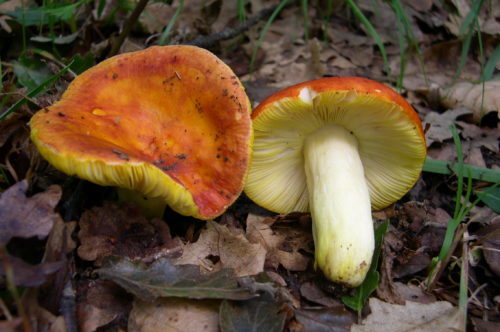
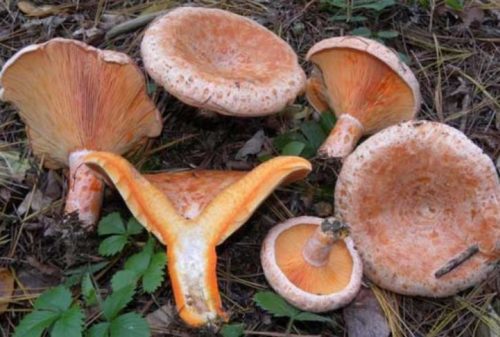
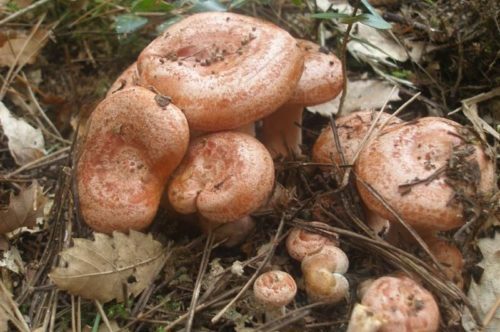
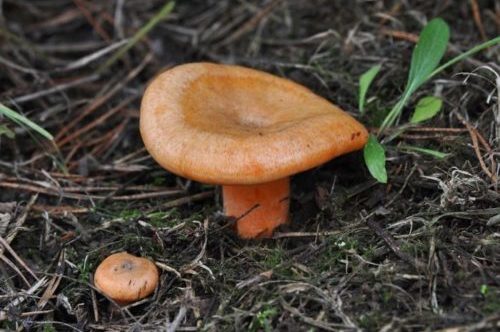
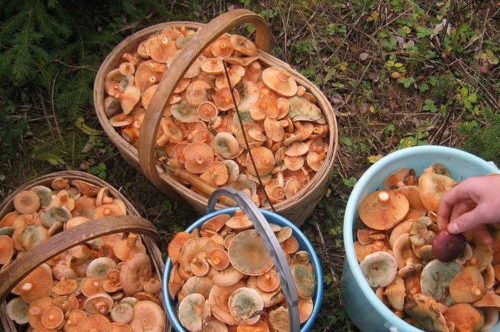
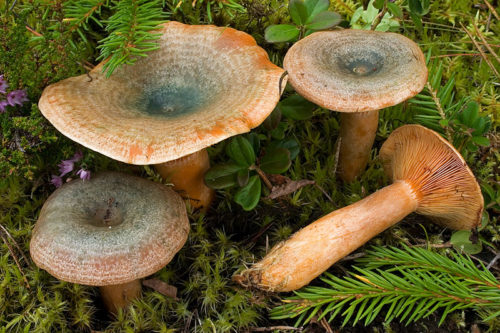
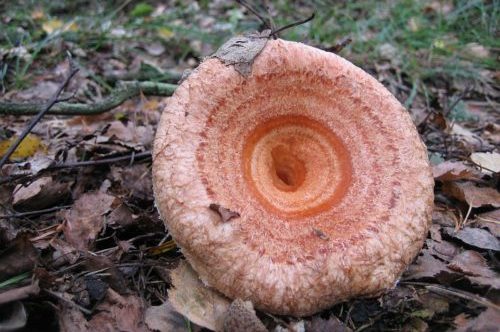
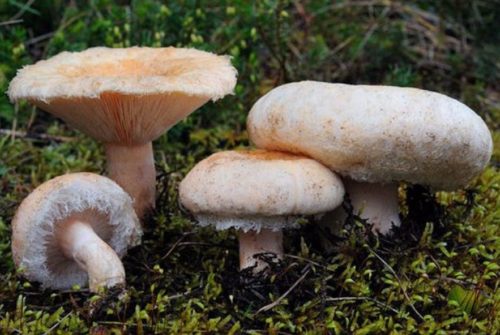
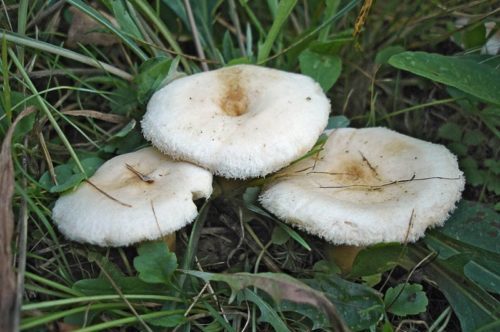
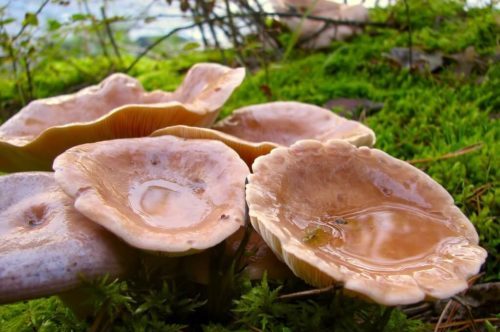
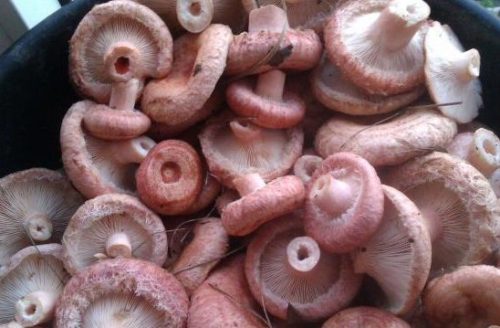
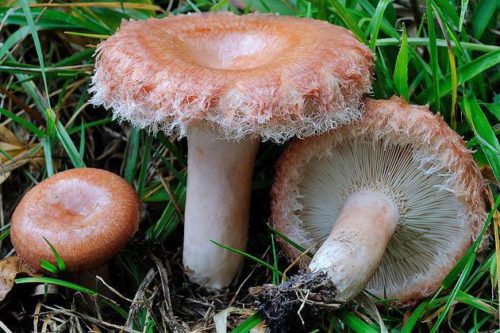
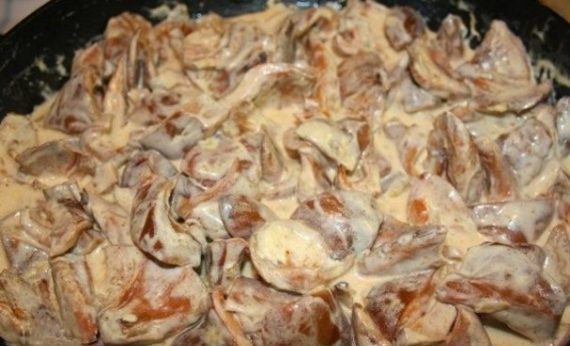
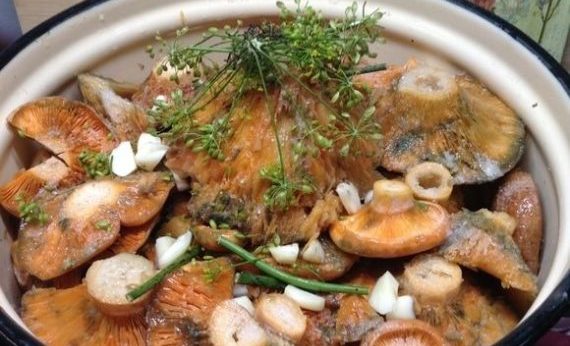
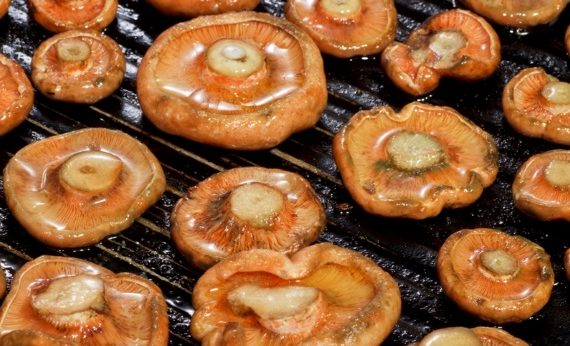
 Care and use of Kombucha at home (+22 photo)
Care and use of Kombucha at home (+22 photo) Edibility of the fungus of the motley umbrella and its description (+19 photo)
Edibility of the fungus of the motley umbrella and its description (+19 photo) Description of edible and inedible oils, their poisonous counterparts (+40 photos)
Description of edible and inedible oils, their poisonous counterparts (+40 photos) Useful properties of milk mushroom and its contraindications (+17 photos)
Useful properties of milk mushroom and its contraindications (+17 photos)